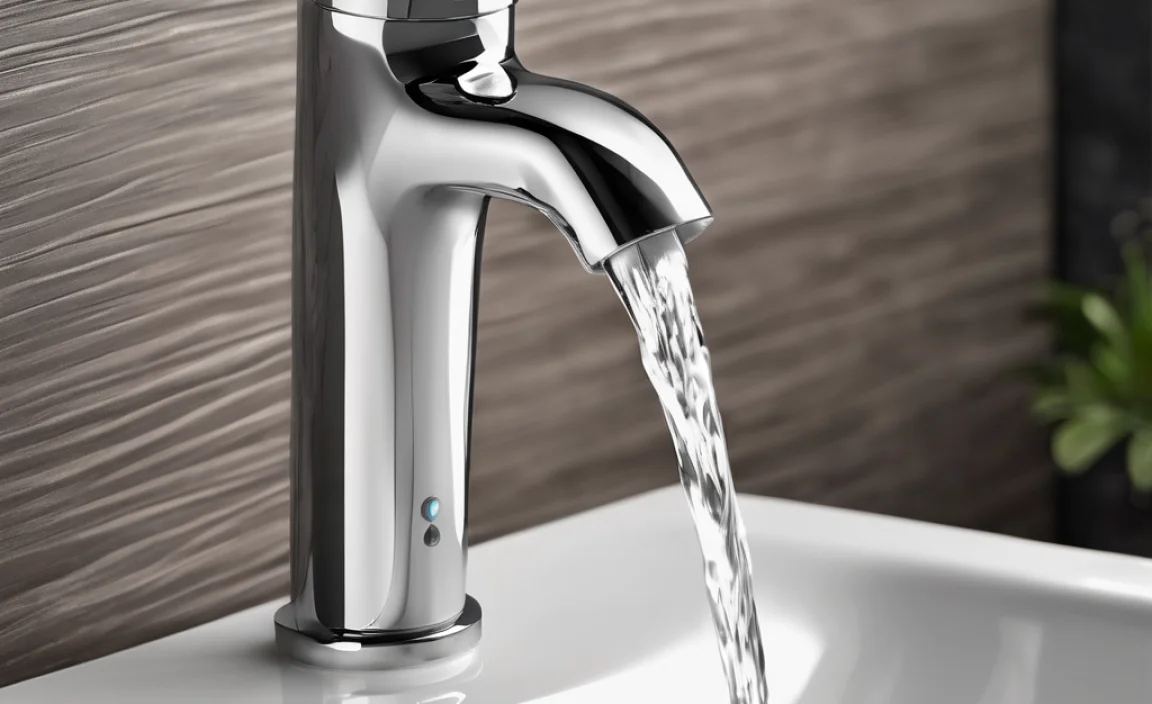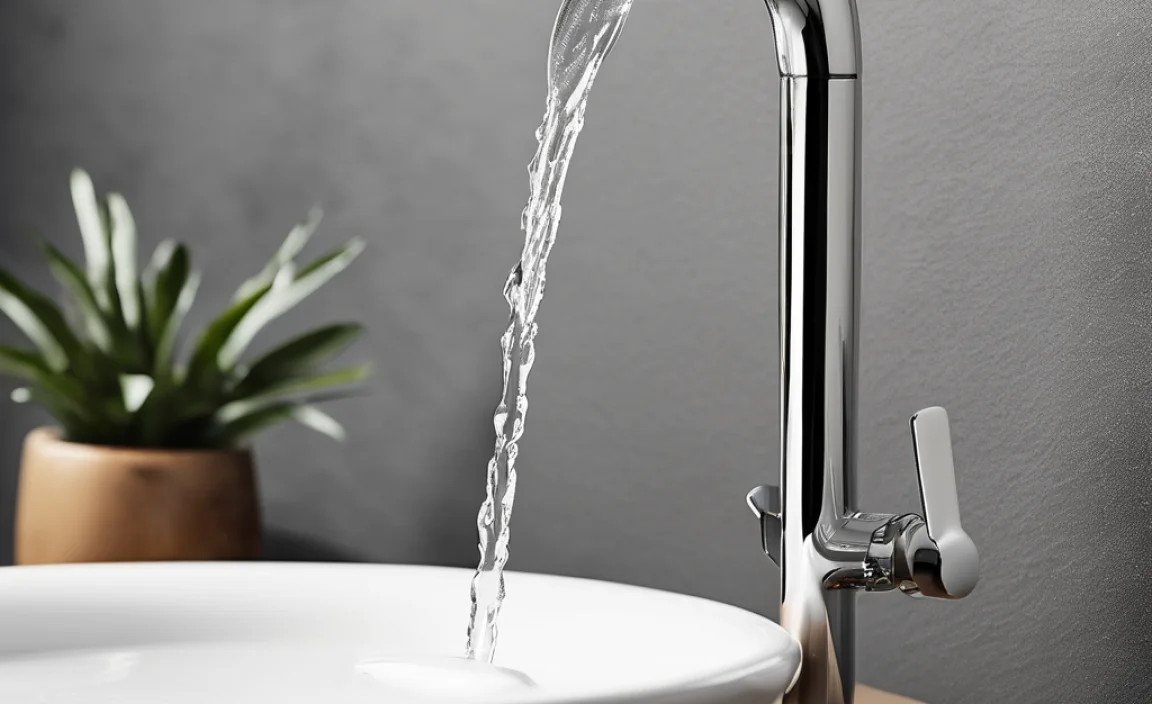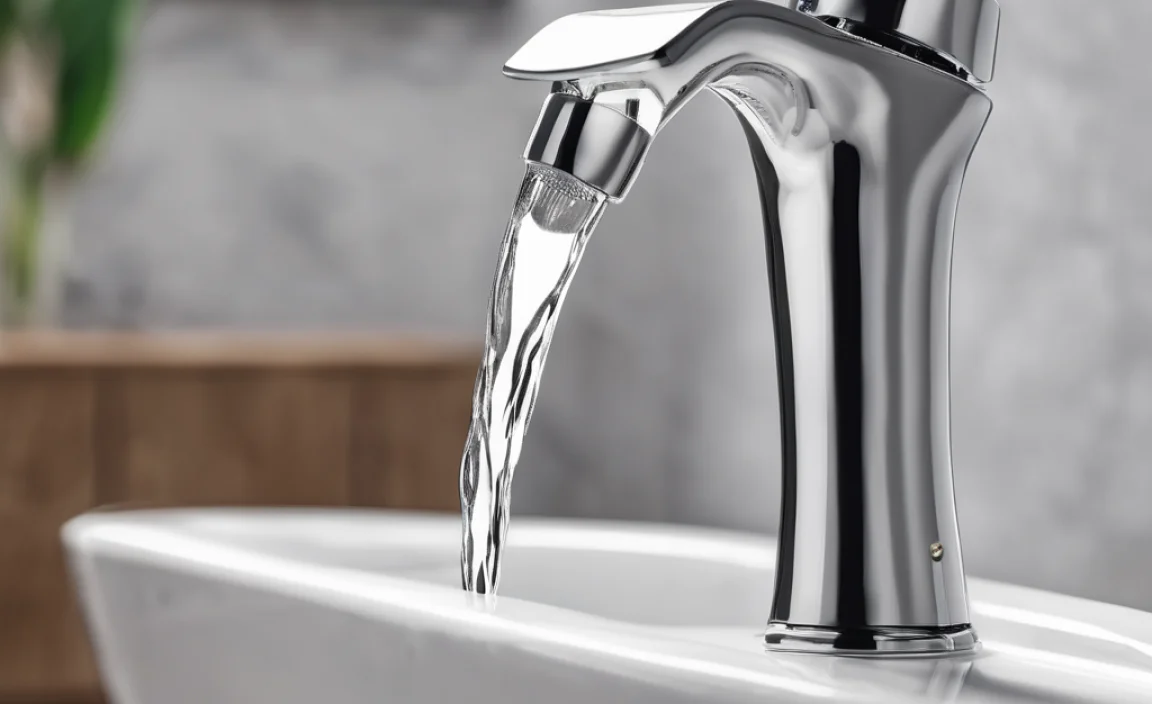Quick Summary: Bidet faucets work by spraying a stream of water to clean your nether regions after using the toilet. They connect to your bathroom’s water supply and use a simple valve system to control water pressure and temperature. Some models offer adjustable nozzles and spray patterns for a personalized cleaning experience.
Ever wondered how those fancy bidet faucets work? They seem complicated, but they’re actually pretty simple. Many folks are curious about bidets but get intimidated by the technology. Don’t worry! It’s easier than you think to understand how they work. With a few basic steps, you’ll know exactly how to use and appreciate this bathroom upgrade. So, let’s dive in and make sense of bidet faucets together!
Understanding the Basics of Bidet Faucets

Let’s start with what a bidet faucet really is. At its heart, a bidet faucet is a fixture that sprays water to clean you after you use the toilet. It’s a hygienic and eco-friendly alternative to toilet paper. Think of it as a mini-shower for your bottom!
Types of Bidet Faucets
There are several types of bidet faucets, each with its own set of features and installation requirements:
- Bidet Seats: These replace your existing toilet seat and often include features like heated seats and warm air dryers.
- Handheld Bidet Sprayers: These are attached to your toilet and look like a small showerhead. You control the spray manually.
- Bidet Attachments: These fit under your existing toilet seat and offer a simple, non-electric bidet function.
- Standalone Bidets: These are separate units next to your toilet, common in some parts of the world.
Key Components of a Bidet Faucet
Regardless of the type, most bidet faucets share these basic components:
- Water Inlet: Connects to your bathroom’s water supply.
- Valve: Controls the water flow and pressure.
- Nozzle: Sprays the water for cleaning.
- Control Knob or Buttons: Adjusts the water pressure, temperature (on some models), and nozzle position.
How a Bidet Faucet Works: A Step-by-Step Guide

Here’s a detailed breakdown of how a bidet faucet operates:
- Water Supply Connection: The bidet faucet connects to your bathroom’s cold water supply line, usually the same one that feeds your toilet. Some advanced models also connect to a hot water line for temperature control.
- Valve Operation: When you turn on the bidet faucet, the valve opens, allowing water to flow through. The valve controls the water pressure, so you can adjust the intensity of the spray.
- Nozzle Activation: The water travels through a small tube to the nozzle. Depending on the bidet type, the nozzle may be fixed or adjustable. Some nozzles retract when not in use to stay clean.
- Spray Mechanism: The nozzle sprays a stream of water to clean your perineal area. The angle and pressure of the spray can usually be adjusted for comfort and effectiveness.
- Drying (Optional): Some bidet seats come with a warm air dryer. After washing, you can activate the dryer to gently dry the area.
Understanding the Internal Mechanics

Let’s take a closer look at what’s happening inside the bidet faucet.
The Valve System
The valve is the heart of the bidet faucet. It’s responsible for controlling the water flow and pressure. Most bidet faucets use a simple ball valve or cartridge valve. When you turn the control knob, you’re essentially moving the ball or cartridge to allow more or less water to pass through.
Nozzle Design
The nozzle is designed to deliver a consistent and effective spray. Some nozzles have multiple holes to create a wider spray pattern. Others have adjustable angles to target specific areas. Many high-end bidets have self-cleaning nozzles that rinse themselves before and after each use.
Water Temperature Control
If your bidet faucet has a temperature control feature, it likely has a mixing valve. This valve blends hot and cold water to achieve the desired temperature. A thermostat inside the valve monitors the water temperature and adjusts the mix accordingly.
Benefits of Using a Bidet Faucet

Why should you consider using a bidet faucet? Here are some compelling reasons:
- Improved Hygiene: Water cleans more effectively than toilet paper, leaving you feeling fresher and cleaner.
- Eco-Friendly: Reduces your reliance on toilet paper, saving trees and reducing waste.
- Cost-Effective: Over time, you’ll save money on toilet paper.
- Comfort: Gentle water spray can be soothing, especially for people with certain medical conditions.
- Convenience: Easy to use and can be a great addition to any bathroom.
Troubleshooting Common Bidet Faucet Issues

Even the best bidet faucets can sometimes have problems. Here are some common issues and how to fix them:
Low Water Pressure
If you’re experiencing low water pressure, check the following:
- Water Supply Valve: Make sure the valve under the toilet is fully open.
- Clogged Nozzle: Clean the nozzle with a small brush or needle.
- Water Filter: Some bidets have a filter that can get clogged. Clean or replace the filter as needed.
Leaking
Leaks can occur at the water connections or around the nozzle. Here’s what to do:
- Tighten Connections: Use a wrench to tighten the water supply connections. Be careful not to overtighten.
- Replace Washers: If tightening doesn’t work, replace the washers inside the connections.
- Check the Nozzle: If the nozzle is leaking, it may need to be replaced.
No Water Flow
If no water is coming out of the bidet, try these steps:
- Check Water Supply: Make sure the water supply is turned on.
- Inspect the Valve: The valve may be stuck or broken. Try turning it back and forth to loosen it.
- Look for Kinks: Check the water supply hose for any kinks or bends that could be blocking the flow.
Bidet Faucet Maintenance Tips
To keep your bidet faucet in good working order, follow these maintenance tips:
- Clean Regularly: Wipe down the bidet faucet and nozzle with a damp cloth regularly.
- Descale if Needed: If you have hard water, descale the nozzle periodically to prevent mineral buildup.
- Check for Leaks: Inspect the water connections regularly for leaks.
- Replace Parts as Needed: Replace worn or damaged parts promptly.
Installation Tips for Bidet Faucets
Installing a bidet faucet can be a DIY project. Here are some tips to make it easier:
- Read the Instructions: Always read the manufacturer’s instructions carefully before starting.
- Gather Your Tools: Make sure you have all the necessary tools, including a wrench, screwdriver, and plumber’s tape.
- Turn Off the Water: Turn off the water supply to your toilet before disconnecting any plumbing.
- Use Plumber’s Tape: Apply plumber’s tape to the threads of the water connections to prevent leaks.
- Test for Leaks: After installation, turn the water back on and check for leaks.
Comparing Different Bidet Faucet Models
Choosing the right bidet faucet can be overwhelming. Here’s a comparison of different models to help you decide:
| Feature | Bidet Seat | Handheld Bidet Sprayer | Bidet Attachment |
|---|---|---|---|
| Installation | Easy (replaces toilet seat) | Moderate (requires plumbing connection) | Easy (fits under toilet seat) |
| Features | Heated seat, warm air dryer, adjustable water temperature | Manual control, simple design | Basic cleaning function, non-electric |
| Price | $$$ | $ | $$ |
| Pros | Luxurious, convenient | Affordable, easy to use | Simple, eco-friendly |
| Cons | Expensive, requires electricity | Requires manual aiming, can be messy | Limited features |
How to Choose the Right Bidet Faucet for Your Needs
Consider these factors when choosing a bidet faucet:
- Budget: Bidet faucets range in price from affordable attachments to high-end seats.
- Features: Decide which features are important to you, such as heated seat, warm air dryer, and adjustable water temperature.
- Installation: Consider your DIY skills and choose a model that you can install easily.
- Space: If you have a small bathroom, a bidet attachment or handheld sprayer may be a better choice than a standalone bidet.
Bidet Faucet Safety Tips
Using a bidet faucet is generally safe, but here are some safety tips to keep in mind:
- Water Temperature: If your bidet has a temperature control, test the water temperature before using it to avoid scalding.
- Water Pressure: Start with low water pressure and gradually increase it to a comfortable level.
- Cleanliness: Keep the nozzle clean to prevent the spread of bacteria.
- Electrical Safety: If your bidet seat has electrical components, make sure it’s properly grounded.
The Environmental Impact of Bidet Faucets
Bidet faucets are an eco-friendly alternative to toilet paper. Here’s how they benefit the environment:
- Reduced Toilet Paper Consumption: Using a bidet can significantly reduce your toilet paper usage, saving trees and reducing waste.
- Lower Water Usage: While bidets use water, they often use less water than it takes to manufacture toilet paper.
- Reduced Chemical Use: Manufacturing toilet paper involves chemicals like bleach. By using a bidet, you reduce the demand for these chemicals.
Bidet Faucets and Health
Bidet faucets can also offer health benefits:
- Improved Hygiene: Water cleans more thoroughly than toilet paper, reducing the risk of infections.
- Relief for Certain Conditions: Bidets can provide relief for people with hemorrhoids, fissures, and other anal discomforts.
- Gentle Cleaning: The gentle water spray is less irritating than wiping with toilet paper, especially for sensitive skin.
FAQ About Bidet Faucets
1. Are bidet faucets hard to install?
No, most bidet faucets are quite easy to install. Bidet seats and attachments often require just a few simple steps and basic tools. Handheld sprayers might need a bit more plumbing know-how, but the instructions are usually clear.
2. Do bidet faucets use a lot of water?
Actually, no! Bidets use a surprisingly small amount of water per use—much less than the water wasted in toilet paper production. You’re saving trees and water in the long run.
3. Are bidet faucets hygienic?
Absolutely! In fact, they’re more hygienic than toilet paper. Water provides a more thorough cleaning, reducing the risk of spreading bacteria. Many bidets also have self-cleaning nozzles for extra cleanliness.
4. Can I adjust the water temperature on a bidet faucet?
Some bidet models come with temperature control, allowing you to adjust the water to your liking. Others use only cold water, which many people find refreshing.
5. Will a bidet faucet fit my existing toilet?
Most bidet attachments and seats are designed to fit standard toilets. Just make sure to check the measurements and compatibility before purchasing. There are models for both round and elongated toilets.
6. Do I need an electrician to install a bidet faucet?
If you choose a non-electric bidet attachment or handheld sprayer, you won’t need an electrician. However, bidet seats with features like heated seats and warm air dryers will require an electrical outlet nearby.
7. How do I clean a bidet faucet?
Cleaning a bidet faucet is simple. Just wipe it down regularly with a damp cloth and mild soap. For the nozzle, use a small brush or a descaling solution to remove any mineral buildup.
Conclusion
Understanding how a bidet faucet works demystifies this innovative bathroom fixture. From the simple mechanics of water flow to the advanced features of modern bidet seats, it’s clear that bidets offer a superior cleaning experience. Whether you’re looking to improve hygiene, reduce your environmental impact, or simply add a touch of luxury to your bathroom, a bidet faucet is a worthwhile investment. So, go ahead and explore the world of bidets—you might just wonder how you ever lived without one!


